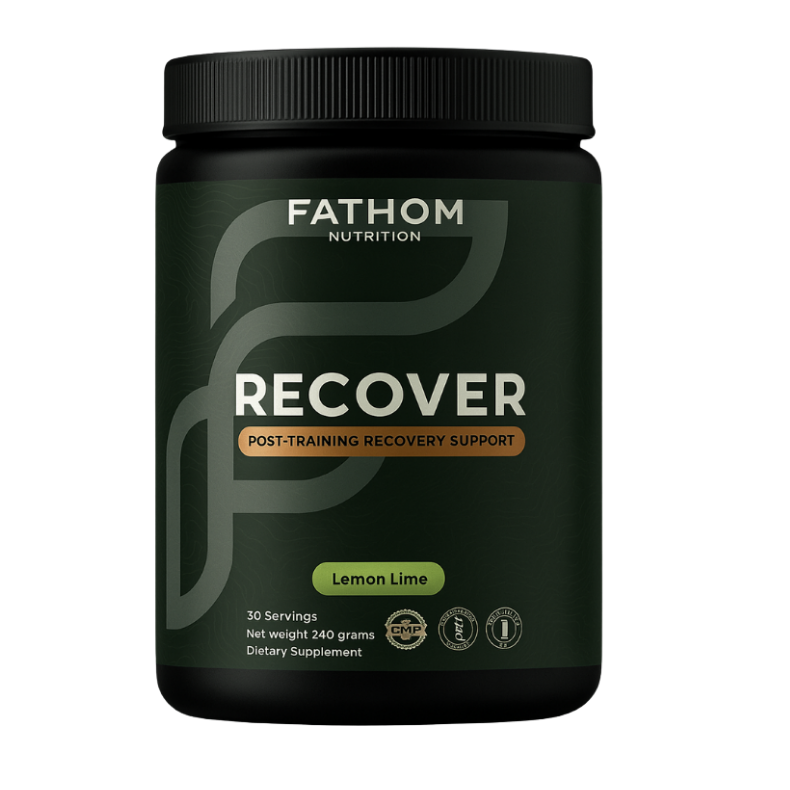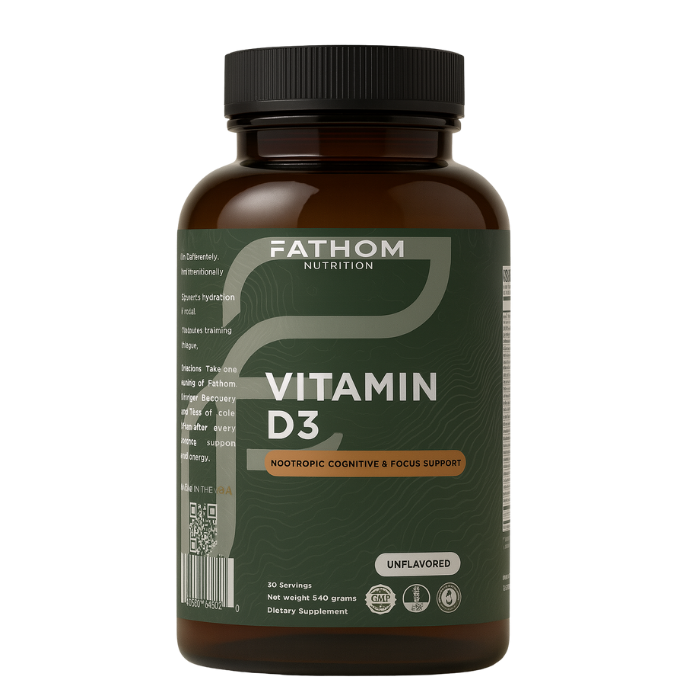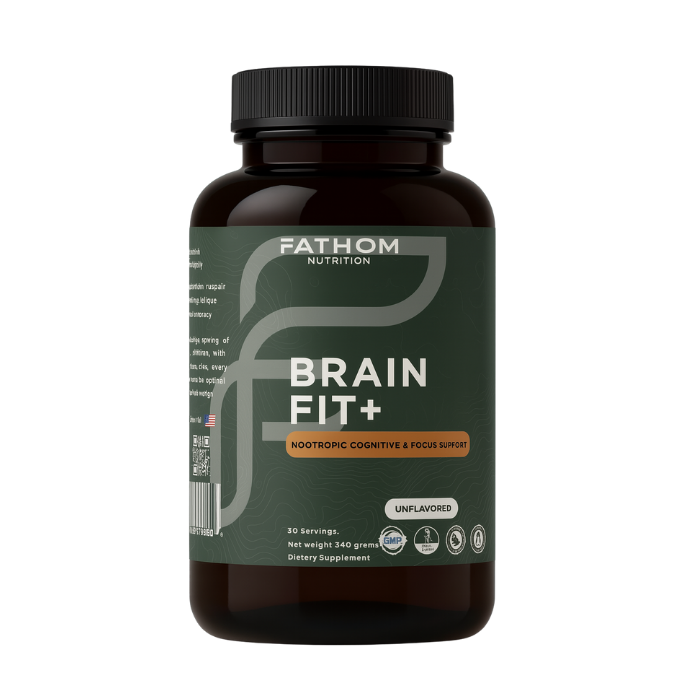The Hybrid Training Blueprint: How to Build Strength, Endurance, and Repeatable Performance Without Burning Out

Hybrid training means deliberately building both strength and endurance to a level that supports athletic performance and long-term health. The central design challenge is not simply time management. It is signal management. Resistance exercise favors the mTOR centered pathways that drive myofibrillar protein synthesis, whereas endurance work elevates AMPK and other signals that promote mitochondrial biogenesis. These pathways can interact. Program design reduces the risk of one signal blunting the other by manipulating frequency, sequence, modality, and recovery windows. Classic work showed endurance plus strength could slow strength gains under certain conditions, but more recent systematic reviews report that the magnitude and even presence of the interference effect depends on controllable variables such as endurance modality and proximity of sessions. In short, the interference effect is not a destiny. It is a programming variable. PMC+3PubMed+3Lippincott Journals+3
What follows is a comprehensive framework to construct weeks and seasons that cultivate both qualities. You will learn how to organize a polarized endurance backbone with strategic speed work, where to place heavy lifts and power sessions, how to eat for concurrent adaptations, which supplements actually help, and how to measure progress without drifting into constant fatigue. The guide includes templates for CrossFit and HYROX athletes, runners and cyclists, and generalists who want to be strong, fast, and durable year round. PMC+1
Part I. Principles that govern hybrid adaptation
1) Concurrent training is compatible with strength and muscle growth when programmed correctly
A landmark meta-analysis in 2012 showed that concurrent training could attenuate strength, power, and hypertrophy gains, with the largest negative effects occurring when endurance frequency and duration were high, especially with running rather than cycling. Subsequent work has reframed the narrative. A 2021 meta-analysis reports that, across many contexts, concurrent training does not inherently blunt maximal strength or hypertrophy when variables are managed. The simplest interpretation is that interference is dose and context dependent rather than guaranteed. Lippincott Journals+2PubMed+2
Programming levers that matter most
• Endurance modality: Cycling tends to interfere less with lower body strength than high-impact running at matched internal load. Lippincott Journals
• Frequency and duration: High weekly mileage and long steady sessions stacked near heavy leg work increase the risk of blunted strength adaptations. Lippincott Journals
• Sequence and spacing: Strength before endurance favors strength outcomes, and spacing sessions by six to eight hours or more allows signaling pathways to normalize. Evidence is mixed by population and outcome, but the weight of data and mechanistic logic favors placing lifting first when strength is the priority. Frontiers+2Physiology Journals+2
• Molecular crosstalk: Endurance elevates AMPK that can inhibit mTORC1 acutely through TSC2 and raptor phosphorylation. The chronic picture is more nuanced, and long-term interference is not inevitable. PMC+2PubMed+2
2) Intensity distribution for endurance work
Descriptive and experimental work in endurance sport shows a stable training intensity distribution in which a large fraction of work is easy and a smaller fraction is very hard. Many accomplished athletes spend about eighty percent of endurance time at low intensity with the remainder devoted to threshold and high intensity. This polarized distribution develops aerobic machinery without excessive stress while preserving freshness for quality strength sessions. PubMed+1
3) Periodization still matters
Meta-analyses comparing periodized programs with non-periodized ones find that organized variation yields superior maximal strength outcomes, while linear and undulating models show broadly similar hypertrophy when total work is matched. In practice, hybrid training benefits from a macrocycle that waves volume and intensity across mesocycles and from weekly undulations that protect strength and endurance sessions from competing for the same recovery resources. PubMed+2PubMed+2
Part II. Building the week: sequencing that respects biology
The three anchor days
Think of your week as built around three anchors with optional low-stress filler.
-
Heavy lower and trunk strength day
Main lifts in the three to six rep range, followed by single leg work and trunk anti-rotation. Finish with short easy aerobic work if desired. Keep endurance intensity low post-lift. Mechanism: prioritize mTOR signaling and motor unit recruitment before any endurance stimulus. PMC -
Endurance quality day
A polarized session that either targets VO2max with timed intervals or threshold with controlled tempo segments. Avoid heavy lifting later the same day. Mechanism: allow AMPK and endurance gene programs to run without immediate strength competition. PubMed+1 -
Power and plyometrics day
Jumps, throws, Olympic lifts or derivatives, and submaximal sprints. Pair with a short skill-focused metcon for CrossFit or with HYROX station skills at low density. This day sharpens rate of force development without creating prolonged soreness that harms endurance quality.
Spacing rules of thumb
• When sessions must share a day, perform strength first, then endurance later, ideally separated by six or more hours and by a full feeding window. Frontiers
• If running volume is high, move heavy lower body lifting to a day separated from quality runs by at least twenty four hours, and consider cycling as the aerobic modality to reduce musculoskeletal stress. Lippincott Journals
Part III. Endurance architecture for hybrid athletes
Choosing the right hard work
There are three main hard stimuli: VO2max intervals, threshold work, and short sprints. VO2max intervals of two to five minutes at about ninety to ninety five percent of maximal aerobic power improve aerobic capacity efficiently. Threshold work at comfortably hard pace elevates sustainable speed or power. Short sprints refine neuromuscular economy. Meta-analyses find that high-intensity intervals produce robust VO2max gains compared to traditional steady training, but the best method is the one you can sustain while lifting heavy in the same week. PubMed+1
A polarized microcycle for busy professionals
• One VO2max session: six by three minutes strong with three minutes easy.
• One threshold session: twenty to thirty minutes continuous at controlled intensity or broken into long cruise intervals.
• Two easy aerobic sessions of thirty to sixty minutes for mitochondrial housekeeping.
• Optional eight to ten ten second hill sprints after an easy run once weekly to maintain stride qualities.
This distribution preserves energy for strength. It also maps cleanly onto CrossFit or HYROX calendars where metcons and mixed sessions supply additional unscripted intensity. PubMed
Part IV. Strength architecture for hybrid athletes
The core lifts and why they matter
Back or safety bar squats, deadlift or trap-bar deadlift, split squats, presses and pulls, and hinge and brace variations create the backbone of hybrid strength. Program one heavy day and one moderate day per week, with a power emphasis on the moderate day. Periodization research suggests that planned variation drives one rep max strength better than doing the same loads forever, while hypertrophy appears similar across linear and undulating schemes when total work is matched. For hybrid athletes the undulating approach fits well because endurance stress is not constant week to week. PubMed+1
A simple four week strength wave
• Week 1: three by six to eight at seventy percent.
• Week 2: four by five at seventy five percent.
• Week 3: five by three to four at eighty to eighty five percent.
• Week 4: deload at sixty percent for two sets, then test bar speed not max.
Rotate single leg emphasis and add trunk anti-rotation two to three times per week to stabilize load transfer during runs, rows, skis, or sled pushes.
Part V. Programming examples by athlete type
A) CrossFit and HYROX athletes
CrossFit and HYROX already bias mixed metabolic stress. The secret to hybrid success is not stacking more intensity, it is organizing it.
HYROX specific facts to consider
Every division repeats one kilometer runs with eight work stations. Stations include ski erg, sled push and pull, burpee broad jumps, rowing, farmer carry, walking lunges, and wall balls. Train skill economy for these tasks while protecting your heavy strength exposures. Hyrox+2Hyrox+2
Weekly template
• Mon Heavy lower plus trunk. Short easy bike flush if desired.
• Tue HYROX skill economy: practice two to three stations at moderate effort with long rests.
• Wed VO2max intervals on a bike to spare joints.
• Thu Upper body push pull strength plus power cleans or jerks; finish with five to eight minute low density metcon.
• Fri Easy aerobic forty to sixty minutes.
• Sat HYROX simulation: two to four run station bricks at low to moderate effort, not an all out suffer fest.
• Sun Off or light mobility.
CrossFit athletes can swap the HYROX bricks for skill based metcons. Keep only one truly hard mixed piece per week if you also want a big squat and a strong engine. CrossFit+1
B) Runners and cyclists who lift
Use the polarized endurance scaffold and drop heavy lower body lifting sixty to ninety minutes after your short easy days or on its own day. Favor cycling for many of your easy sessions to reduce mechanical strain if you battle soreness from squats. This reduces interference risk seen with high-impact running when endurance frequency or duration is high. Lippincott Journals
C) Generalist gym goers
Two full body strength sessions, one VO2max session, one threshold session, and one to two easy aerobic sessions will move you forward rapidly. Periodize every four to six weeks by pulling back intensity for seven days before advancing loads.
Part VI. Nutrition for concurrent adaptation
Protein: daily targets and distribution
A pivotal meta-analysis points to about one point six grams of protein per kilogram per day to maximize lean mass gains with resistance training, with diminishing returns above two point two grams for most. Distribute protein across the day. Studies show that twenty grams of high quality protein every three hours stimulated muscle protein synthesis more effectively than the same total protein in either smaller more frequent doses or larger infrequent boluses. For a one hundred fifty pound athlete, think four to five feedings with about twenty five to forty grams per meal depending on size. PubMed+2PubMed+2
Practical guardrails
• Aim for zero point three grams per kilogram per meal as a simple heuristic with a leucine rich source. PMC
• Older athletes may benefit from slightly larger servings per meal. PMC
Carbohydrate: timing by session type
Carbohydrate availability modulates endurance performance and affects high quality strength training. Use more carbohydrate before VO2max and threshold work, moderate amounts before heavy strength days, and less before easy aerobic sessions when desired for mitochondrial signaling. Do not pair low carbohydrate with your heaviest lifting if strength is a priority in that block.
Hydration basics
Start sessions euhydrated, drink to replace losses in long heat or altitude sessions, and include electrolytes in long mixed events. The American College of Sports Medicine position stand on exercise and fluid replacement remains a useful baseline reference for principles. PubMed
Energy availability and health
Hybrid athletes often chase many goals and drift into low energy availability. The International Olympic Committee’s consensus papers on Relative Energy Deficiency in Sport describe the health and performance risk of chronic deficits in men and women. If mood, sleep, libido, or training quality drop for weeks, audit intake and load before adding more stress. PubMed
Part VII. Supplements with meaningful evidence
Creatine monohydrate
Creatine supports phosphocreatine recycling and repeated high intensity efforts and augments strength and lean mass. The IOC consensus places creatine among supplements with strong evidence for performance enhancement when used appropriately. British Journal of Sports Medicine
Dose five grams per day after an optional loading phase.
Caffeine
Meta-analyses show small to moderate ergogenic effects on endurance, strength, power, and rate of force development. Typical effective doses are three to six milligrams per kilogram taken about sixty minutes before hard sessions. Mind sleep displacement and individual sensitivity. PubMed+2Wiley Online Library+2
Beta alanine
By increasing intramuscular carnosine, beta alanine buffers hydrogen ions and helps in hard efforts lasting roughly one to four minutes. This maps well to many mixed workouts and HYROX efforts. Effects scale with dose and duration of loading. PubMed+1
Sodium bicarbonate
Acute doses improve performance for high intensity tasks of about thirty seconds to twelve minutes including repeated sprints and metabolic pieces. Start with trial doses to test tolerance. BioMed Central+1
These four are repeatedly identified by consensus groups as performance-relevant when used in appropriate contexts. Do not stack every ergogenic in the same week. Use them like high grade spices rather than the main course. British Journal of Sports Medicine
Part VIII. Recovery, sleep, and readiness
Sleep is the ultimate performance multiplier. Reviews in athletes link inadequate sleep to impaired performance, slower reaction time, and increased illness risk. Hybrid training compounds the need for recovery because both muscular and aerobic systems are stressed. Target seven to nine hours, keep caffeine earlier in the day, and align the prior evening’s carbohydrate to your morning session type. SpringerLink+1
Use subjective readiness paired with a simple rolling performance metric such as bar speed on a familiar lift or pace at a given heart rate on an easy run. If both are trending down for a week, pull volume and intensity rather than pushing into deeper fatigue.
Part IX. Putting it all together: twelve-week hybrid macrocycle
Phase 1, weeks 1 to 4: General preparation
• Two strength sessions focused on movement quality and unilateral balance.
• One VO2max session and one threshold session.
• One to two easy aerobic sessions.
• Accessories for feet, ankles, hips, and trunk.
Phase 2, weeks 5 to 8: Strength and engine
• Strength undulates between intensity and volume across weeks, progressing main lifts while protecting technique.
• Endurance stays polarized with one high quality and one threshold or long session.
• Include one power microdose day with jumps or Olympic derivatives.
Phase 3, weeks 9 to 11: Specificity
• For HYROX, add run station bricks at low to moderate effort. For CrossFit, add sport-specific skills with generous rests. Runners or cyclists shift the threshold day toward event specific intensity while maintaining one heavy full body session.
• Keep one easy long session for aerobic durability.
Week 12: Deload and sharpen
• Reduce volume by thirty to fifty percent, keep intensity but shorten sets, and sleep more.
This structure respects signaling biology and aligns with evidence that periodized training improves strength while endurance is maintained through polarized intensity. PubMed+1
Part X. GEO notes and practical examples for real athletes
Denver and the Front Range
Use cycling for many easy sessions to reduce joint stress from stacked running and lifting at altitude. Keep your big squat day forty eight hours away from trail intervals on Green Mountain or North Table. Lippincott Journals
Salt Lake City and Park City
Polarize endurance during ski season. Easy aerobic climbs on Millcreek or Emigration support recovery between resort and backcountry days. Move heavy lifting to evenings after bluebird morning tours to protect on-snow quality.
Boise and Sun Valley
When juggling mountain biking, running, and lifting, pair heavy legs with low impact cycling the next day. Save Camel’s Back or Military Reserve intervals for midweek when sleep is reliable.
Austin and Atlanta
Heat and humidity increase fluid needs on long aerobic days. Plan electrolytes when stacking metcons with outdoor runs. Use early morning sessions to guard sleep and keep caffeine from creeping into the evening. PubMed
Vancouver, Calgary, Toronto
Wet or cold conditions can blunt thirst, but respiratory water loss still matters on long rides and runs. Carry fluids even when you feel less thirsty. PubMed
Frequently asked questions
Will endurance kill my gains
Not if you manage modality, frequency, and sequence. Running placed too close and too often to heavy lower body lifting can reduce strength progress, while cycling has a lower interference footprint and spacing helps. Lippincott Journals
Should I lift before or after intervals
When both must occur on one day, lift first if strength is a priority. If the day is reserved for endurance quality, separate the lift by many hours or move it to another day. Frontiers
How much protein do I really need
Approximately one point six grams per kilogram per day works well for most, divided into four to five meals that reach the leucine threshold. PubMed+1
Which supplements actually help
Creatine, caffeine, beta alanine, and sodium bicarbonate have the strongest support for specific use cases. Test tolerance in training. British Journal of Sports Medicine
How many hard sessions per week
Two endurance quality sessions and two strength exposures with one power microdose day is a strong ceiling for busy adults. Push beyond that only if sleep and stress are excellent.
Sample weekly plans
1) HYROX focused hybrid week
Mon Heavy lower: squat 5×3 at eighty five percent, split squat 3×6 per side, trunk anti-rotation 3×10 per side.
Tue HYROX skills: ski erg, sled push, sled pull at seventy percent, three to four rounds, long rests.
Wed VO2max ride: six by three minutes strong, three minutes easy.
Thu Upper strength and power: push press 5×3, weighted pullups 4×5, med-ball throws 4×4.
Fri Easy aerobic forty five minutes.
Sat HYROX bricks: run one kilometer then one station at easy to moderate, repeat two to four times.
Sun Off or mobility.
HYROX format references ensure your skill practice matches reality on race day. Hyrox+1
2) CrossFit emphasis with a strong engine
Mon Strength total body with lower bias.
Tue Easy aerobic forty to sixty minutes.
Wed Interval run: five by one kilometer controlled.
Thu Olympic derivative and short low density metcon.
Fri Easy spin or row and mobility.
Sat Benchmark CrossFit workout or partner piece, not every week.
Sun Off.
3) Runner or cyclist first, lifting second
Mon Threshold workout.
Tue Heavy lower body in the evening.
Wed Easy aerobic.
Thu VO2max session.
Fri Upper body and trunk.
Sat Long aerobic.
Sun Off.
Practical lab: measurable benchmarks that map to hybrid success
Strength
• Trap bar deadlift triple at eighty five percent moves up slowly over months.
• Front squat double as a proxy for leg strength with posture integrity.
Endurance
• Ten-minute all-out bike test power or a critical power model point.
• A three kilometer run or a one mile repeat time, controlled conditions.
Economy and resilience
• Pace at a fixed heart rate for thirty minutes improves over time.
• Session RPE trending down for the same work indicates better durability.
Troubleshooting and common pitfalls
Problem: Legs always feel heavy for key runs.
Fix: Move heavy lower day forty eight hours from quality runs, switch many easy runs to bike or elliptical, and add carbohydrates the evening before the run. Consider placing brief jumps and skips after the warm up to restore stiffness.
Problem: Strength stalled while mileage climbed.
Fix: Cut endurance frequency rather than endurance quality, and cycle erg instead of run for easy work during strength priority blocks. This exploits the lower interference profile of cycling compared to running. Lippincott Journals
Problem: Persistent fatigue and poor sleep.
Fix: Audit caffeine timing, reduce mixed high intensity, and protect at least one true rest day. Sleep reviews in athletes make a strong case that sleep deprivation impairs performance and mood. SpringerLink
Problem: Stomach distress with sodium bicarbonate.
Fix: Use split doses over ninety to one hundred eighty minutes or microdosing across days to blunt side effects, and test only in training. PMC
Bottom line
Hybrid performance is not an accident. It is the product of a few robust rules applied consistently. Keep endurance polarized, place heavy lifting where it can be expressed, manage session order and spacing, fuel with adequate daily protein and context-specific carbohydrate, use a small set of well-supported supplements when they match the task, and defend sleep like it is a training session. The science does not say you must choose between strength and endurance. It says you must program them to coexist.
Reference list with direct links
• Hickson RC. Interference of strength development by simultaneously training for strength and endurance. Eur J Appl Physiol, 1980. PubMed
• Wilson JM et al. Concurrent training meta-analysis. J Strength Cond Res, 2012. Lippincott Journals
• Coffey VG, Hawley JA. Concurrent exercise training mechanisms. J Physiol, 2016. PMC
• Fyfe JJ et al. Molecular bases of interference. Sports Med, 2014. PubMed
• Schumann M et al. Compatibility of concurrent training. Sports Med Open, 2021. PMC
• Seiler S. Best practice for training intensity distribution. Int J Sports Physiol Perform, 2010. PubMed
• Stöggl T, Sperlich B. Training intensity distribution among well-trained athletes. Front Physiol, 2015. PMC
• Milanovic Z et al. HIIT vs endurance for VO2max meta-analysis. Sports Med, 2015. PubMed
• Rhea MR. Periodized vs non-periodized resistance training meta-analysis. Res Q Exerc Sport, 2004. PubMed
• Williams TD et al. Periodization and maximal strength meta-analysis. Sports Med, 2017. PubMed
• Morton RW et al. Protein intake meta-analysis. Br J Sports Med, 2018. British Journal of Sports Medicine
• Areta JL et al. Protein distribution every three hours. J Physiol, 2013. PMC
• ACSM Position Stand: Exercise and Fluid Replacement. Med Sci Sports Exerc, 2007. PubMed
• IOC consensus on supplements for high performance. Br J Sports Med, 2018. British Journal of Sports Medicine
• Grgic J et al. Caffeine performance meta-analyses. Sports Med, 2019 and related. British Journal of Sports Medicine
• Saunders B et al. Beta alanine meta-analysis. Br J Sports Med, 2017. PubMed
• Grgic J et al. Sodium bicarbonate umbrella review. J Int Soc Sports Nutr, 2021. PMC
• Fullagar HHK et al. Sleep and athletic performance review. Sports Med, 2015. SpringerLink
• IOC consensus on Relative Energy Deficiency in Sport, 2018 update. Br J Sports Med, 2018. PubMed
• HYROX official race format and rulebooks. Hyrox+1
• CrossFit methodology pages. CrossFit











